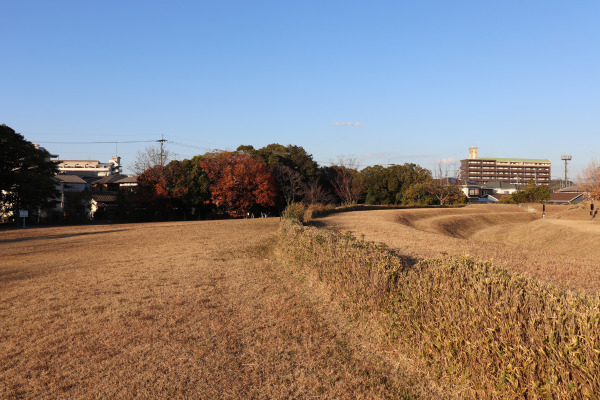Itazuke Ruins: The Birthplace of Japan’s Rice Farming
Just a stone’s throw from Fukuoka Airport in Hakata is one of Japan’s most famous national historic sites, the Itazuke Ruins. These ancient Yayoi Period ruins attract history buffs from all over the country since they mark a crucial point in the development of Japan’s civilization; the birth of rice farming.
The Birth of Rice Farming
Predated only by the Paleolithic Period, the two earliest periods in Japan’s long history are the Jomon Period and the Yayoi Period. The Jomon Period lasted from 13,000 BC to about 300 BC. It was followed by the Yayoi Period, which lasted until 250 AD. During the Jomon Period, people largely lived in semi-permanent pit dwellings. However, in the Yayoi Period, people started to permanent homes and communities. One of the primary reasons people these communities began to flourish in this period was agriculture, specifically rice farming.

Another significant difference between these two ancient periods was pottery. Pottery in the Jomon Period was very fragile and had a tell-tale rope pattern on it. This is why it is the “Jomon” period; Jomon means “rope pattern”. However, the people of the Yayoi Period began to use kilns to make pottery. Using kilns resulted in a much more durable earthenware.

In the Itazuke Ruins, archaeologists indeed excavated pottery from the Yayoi Period, but further excavations revealed that some of the pottery was in fact from the Jomon Period. This discovery surprised many archeologists as it indicates that rice farming possibly started in the late Jomon Period, much earlier than they once believed.
Itazuke Ruins
The Itazuke ruins are about 30 minutes from Tenjin or Hakata Station by bus. It is located in the middle of a quiet neighborhood, so if you don’t pay attention you might miss it! The ruins opened to the public in 1995 as a park. The park consists of the Itazuke settlement, rice fields, and a museum. Entrance to the park is free. Definitely go to the museum first so you can learn all about the settlement!


Rice Fields
The restored rice fields in the park are a great example of how rice farming worked in the Yayoi Period. The fields are divided neatly by ridges. The irrigation system brought water from the nearby river and even sluices. It is quite surprising that the rice farming infrastructure of the Yayoi Period is not that different from today.
Also, many tools were excavated from these rice fields, some of which are quite sophisticated. You can see all those collections at the museum.

Itazuke Settlement
The Itazuke ruins are one of the earliest settlements in Japan. It is surrounded by two V-shaped moats. Those moats are often described as a protective trait of the settlement, but considering that no weapons were excavated near them, the reason for these moats is unknown. Maybe wild animals?




Itazuke Ruins Graveyard
The graveyard is located just outside of the moat. The discovery of a graveyard is really exciting because it helps show the development of these people’s concepts of an afterlife. Why did these ancient people not want to keep their deceased in the village? Were they a little afraid of those who died? So many questions!
The dead were placed in earthenware burial jars called Kamekan and buried underground. The bones of the deceased gave archeologists a lot of information, such as how they died, their physical structures, and even their lifestyle.




Leave a Reply